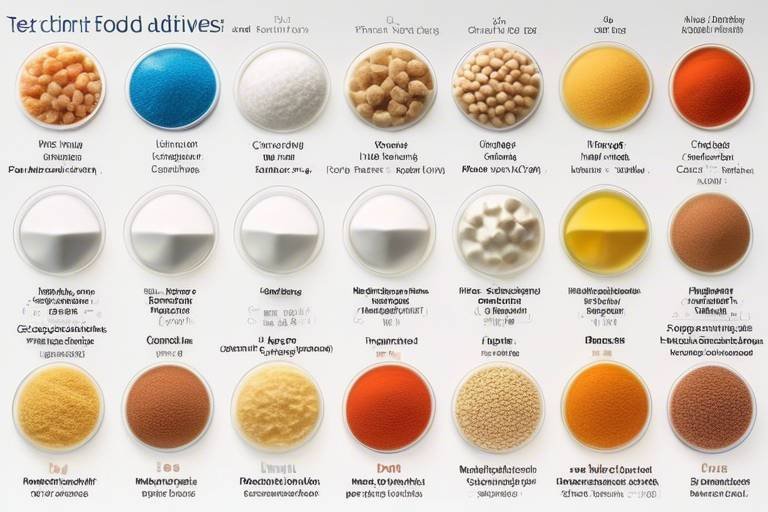The Chemistry of Energy Efficiency in Appliances
In our fast-paced world, energy efficiency has become more than just a buzzword; it’s a necessity. The appliances we use daily—from refrigerators to washing machines—play a significant role in our energy consumption and environmental footprint. Understanding the chemistry behind energy efficiency can help us appreciate how these devices operate and their impact on our planet. This article explores the intricate relationship between chemical principles and the technologies that drive energy efficiency in modern appliances, highlighting their importance in reducing energy consumption and environmental impact.
At the core of energy efficiency lies the concept of energy transfer, which is governed by the laws of thermodynamics. These fundamental principles dictate how energy is converted and utilized within appliances, influencing their design and functionality. For instance, the first law of thermodynamics, which states that energy cannot be created or destroyed, emphasizes the need for effective energy management in appliance operation. The second law, highlighting the tendency for energy to disperse, underscores the importance of minimizing energy losses through innovative designs and materials.
As we delve deeper, we discover that advancements in materials science have been pivotal in enhancing the energy efficiency of appliances. New materials are being developed that not only improve performance but also reduce energy losses significantly. For example, the introduction of high-performance thermal insulators helps keep the energy within the appliance, ensuring that less energy is wasted during operation. This innovation is crucial in devices like refrigerators and ovens, where maintaining temperature is essential for optimal performance.
Effective insulation technologies are at the forefront of this energy efficiency revolution. Materials such as aerogels and vacuum insulation panels are game-changers, minimizing heat transfer and maximizing energy conservation. These materials work by creating barriers that significantly reduce thermal conductivity, allowing appliances to operate more efficiently. Imagine wrapping your appliance in a cozy blanket that keeps the warmth in and the cold out; that's the magic of modern insulation technologies.
Looking ahead, the future of insulation materials is bright. Emerging innovations promise even greater efficiency, with materials that are not only lighter and stronger but also more sustainable. These advancements could revolutionize how appliances conserve energy, making them even more eco-friendly while delivering superior performance. The potential for these materials to reshape the appliance landscape is immense, offering consumers more choices that align with their sustainability goals.
Moreover, understanding the comparative effectiveness of different insulation types is crucial for consumers. A well-informed choice can lead to significant long-term savings on energy bills while also contributing to a greener planet. For instance, while traditional fiberglass insulation is still widely used, newer materials may offer better performance and lower environmental impact. By choosing energy-efficient appliances equipped with advanced insulation, consumers can make a difference in their energy consumption.
In addition to materials science, the integration of smart technologies is transforming appliances into more energy-efficient devices. The Internet of Things (IoT) and smart sensors are at the forefront of this transformation, allowing for real-time monitoring and optimization of energy usage. Imagine your refrigerator adjusting its cooling settings based on the contents inside or your washing machine determining the optimal water level based on the load size—these are just a few examples of how smart technology enhances energy efficiency.
As we navigate through this landscape of energy-efficient appliances, it's essential to consider the Energy Star ratings that serve as a benchmark for appliance efficiency. These ratings provide consumers with a clear understanding of how energy-efficient a product is compared to similar items. By understanding how these ratings are determined, consumers can make informed decisions that align with their energy-saving goals.
Ultimately, the impact of Energy Star ratings on consumer choices cannot be overstated. Awareness of energy efficiency not only influences purchasing decisions but also shapes market trends and consumer behavior. As consumers become more environmentally conscious, manufacturers are compelled to innovate and produce more energy-efficient appliances to meet this growing demand.
Lastly, government regulations and standards play a pivotal role in promoting energy efficiency. Policies that encourage manufacturers to develop energy-efficient appliances are crucial for driving change in the industry. These regulations not only help consumers save on energy costs but also contribute to a more sustainable future.
- What are Energy Star ratings? Energy Star ratings are a certification that indicates an appliance meets specific energy efficiency guidelines set by the U.S. Environmental Protection Agency.
- How do smart technologies improve energy efficiency? Smart technologies optimize energy usage by adjusting settings based on real-time data, reducing unnecessary energy consumption.
- What materials are best for insulation in appliances? Advanced materials like aerogels and vacuum insulation panels are among the best for minimizing heat transfer and enhancing energy efficiency.
- Why is thermodynamics important in appliance design? Thermodynamics governs energy transfer, which is crucial for designing appliances that maximize efficiency and minimize energy loss.
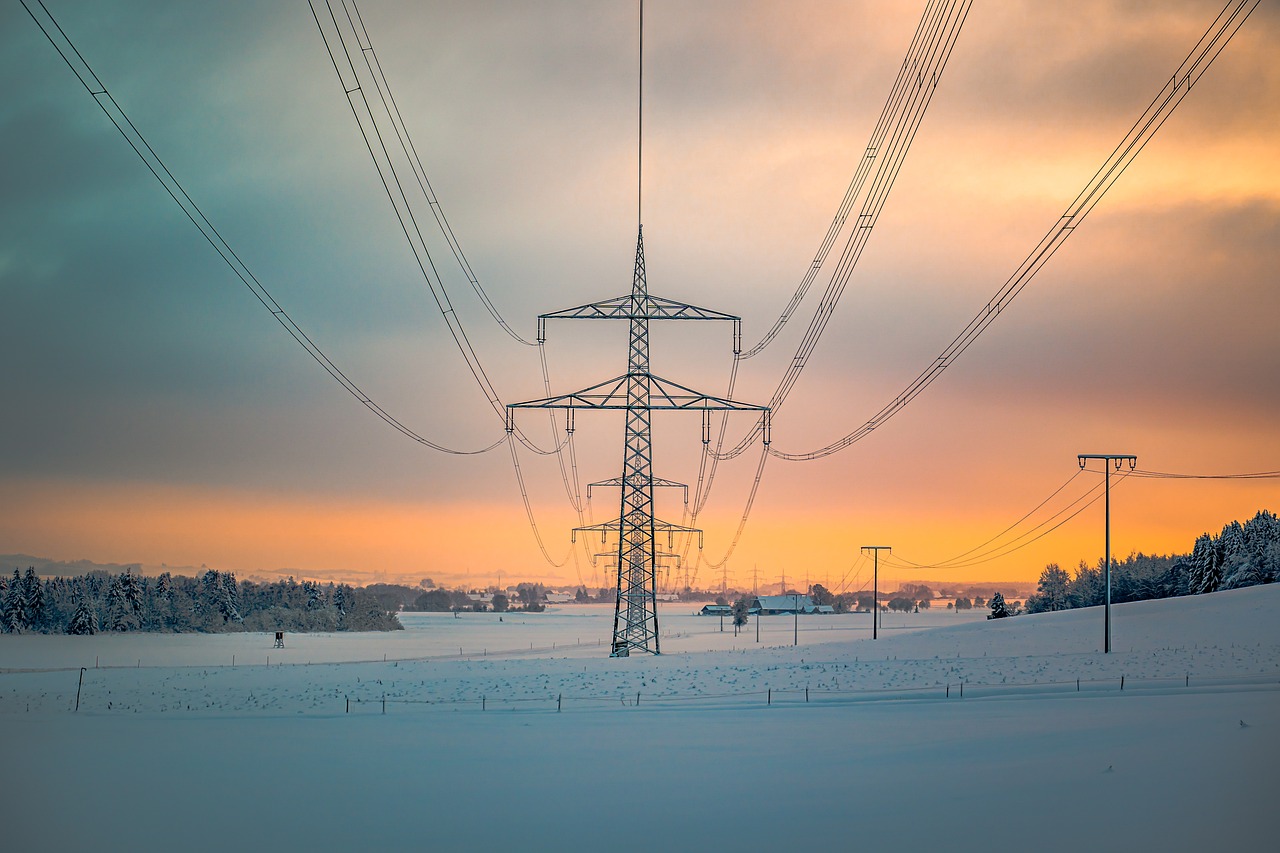
The Role of Thermodynamics
This article explores the chemical principles and technologies that drive energy efficiency in modern appliances, highlighting their importance in reducing energy consumption and environmental impact.
When we talk about energy efficiency in appliances, we can't overlook the fascinating world of thermodynamics. This branch of physics deals with the laws governing energy transfer, and it plays a pivotal role in the design and function of our everyday devices. Imagine thermodynamics as the rulebook that appliances must follow to maximize their efficiency. There are four fundamental laws of thermodynamics that guide engineers and designers in creating appliances that consume less energy while delivering optimal performance.
The first law, known as the law of energy conservation, states that energy cannot be created or destroyed, only transformed. This means that every appliance must efficiently convert the energy it consumes into useful work, whether that's cooling your fridge or heating your water. If an appliance wastes energy during this transformation, it’s not just costing you money; it's also impacting the environment. For instance, a refrigerator that uses more energy than necessary contributes to higher electricity bills and increased greenhouse gas emissions.
Next, we have the second law of thermodynamics, which introduces the concept of entropy. In simple terms, it tells us that energy systems tend to move towards a state of disorder. This is crucial for appliance design because it implies that some energy will always be lost as heat during operation. Engineers strive to minimize this energy loss by improving insulation and optimizing the appliance's operational processes. Think of it like trying to keep your house warm in winter: the better your insulation, the less heat escapes, and the more efficient your heating system becomes.
The third and fourth laws of thermodynamics delve deeper into the behaviors of systems at absolute zero and the concept of thermodynamic equilibrium. While these laws are less directly relevant to appliance design, they underpin the scientific principles that guide innovations in energy efficiency. For instance, understanding how materials behave at different temperatures can lead to breakthroughs in insulation technologies, helping to keep your appliances running efficiently.
Incorporating thermodynamic principles into appliance design doesn't just improve energy efficiency; it also enhances performance. For example, modern washing machines are designed to optimize water and energy use by employing advanced sensors that adjust cycles based on load size and fabric type. This not only saves energy but also prolongs the life of your clothes. So, the next time you're doing laundry, think about the intricate dance of thermodynamics at play!
In summary, thermodynamics is the backbone of energy-efficient appliance design. By understanding and applying these principles, manufacturers can create devices that not only save energy but also provide better performance. The implications of this are profound, affecting everything from household bills to global energy consumption. As we continue to innovate and refine our appliances, the role of thermodynamics will remain a cornerstone in our quest for energy efficiency.
- What is thermodynamics? Thermodynamics is the branch of physics that deals with the relationships between heat, work, temperature, and energy.
- How does thermodynamics affect appliance efficiency? Thermodynamics helps engineers understand how to minimize energy loss and maximize energy conversion in appliances.
- Why is insulation important in appliances? Insulation reduces heat transfer, which helps appliances operate more efficiently and consume less energy.
- What are some examples of energy-efficient appliances? Examples include Energy Star-rated refrigerators, washing machines, and dishwashers that use advanced technologies to save energy.
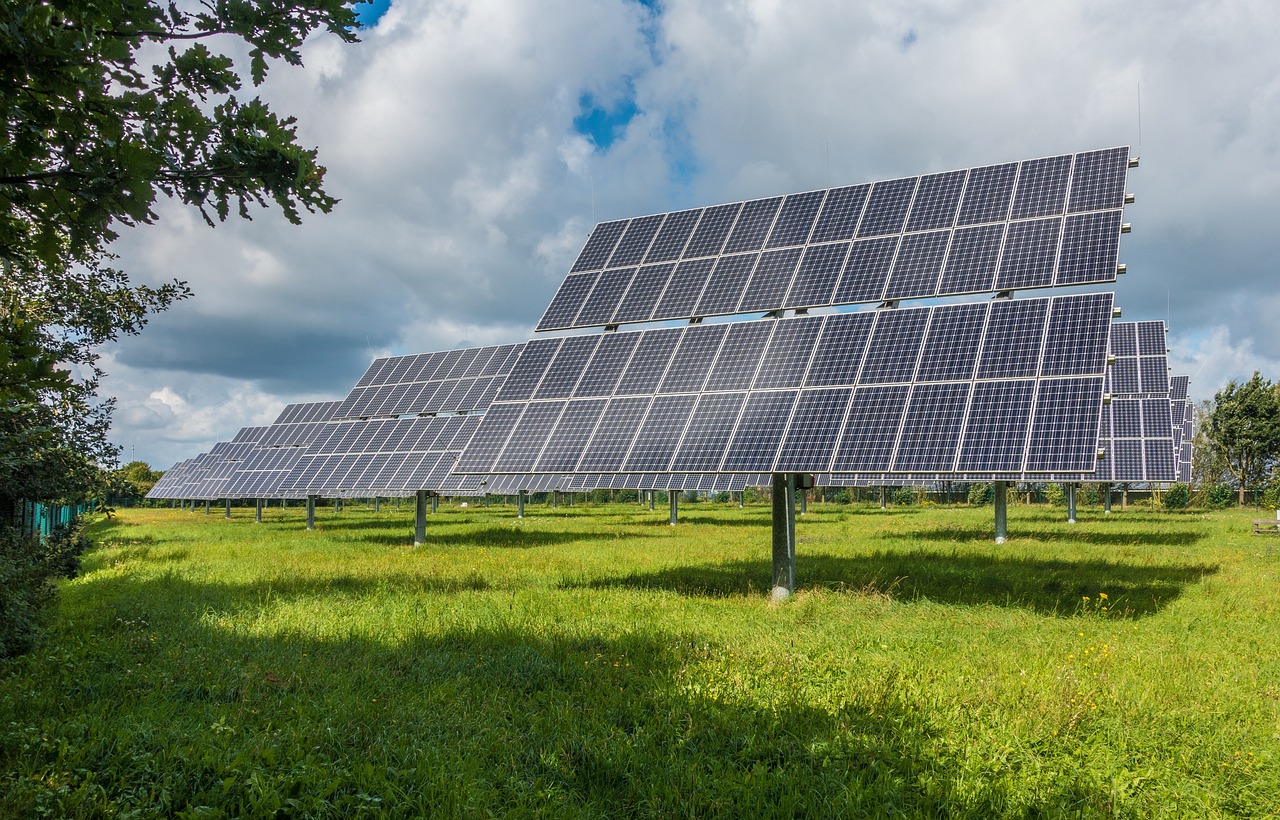
Materials Science Innovations
Advancements in materials science have paved the way for the creation of energy-efficient appliances that not only perform better but also consume less energy. Imagine living in a world where your refrigerator doesn't just keep your food cold but does so while using a fraction of the energy of older models. This is the reality we are moving towards, thanks to innovative materials designed specifically for energy conservation.
One of the most significant breakthroughs in materials science is the development of high-performance insulation. Traditional insulation materials, while effective to some extent, often fall short when it comes to minimizing energy loss. Newer materials, such as aerogels and vacuum insulation panels, are revolutionizing how we think about energy efficiency. These materials are not only lightweight but also incredibly effective at reducing heat transfer, which is crucial for appliances like refrigerators, ovens, and water heaters.
Effective insulation is vital for energy efficiency in appliances. For instance, aerogels, often referred to as "frozen smoke," are some of the most efficient insulating materials available. They have a very low thermal conductivity, which means they can significantly reduce heat loss. On the other hand, vacuum insulation panels create a vacuum between two layers of material, virtually eliminating heat transfer. This technology is particularly beneficial in high-performance refrigerators and freezers, where maintaining a constant low temperature is essential.
The future of insulation materials looks promising, with researchers exploring even more advanced options. For example, phase change materials (PCMs) are being integrated into appliance design. These materials can absorb and release thermal energy, helping to maintain a stable temperature within the appliance. Imagine a washing machine that uses less energy by regulating its temperature more effectively—this is the potential of PCMs.
When comparing different insulation types, it becomes clear that not all materials are created equal. Below is a brief overview of various insulation types and their effectiveness:
| Insulation Type | Thermal Conductivity (W/m·K) | Application |
|---|---|---|
| Aerogels | 0.013 | Refrigerators, freezers |
| Vacuum Insulation Panels | 0.004 | High-performance appliances |
| Fiberglass | 0.035 | General insulation |
| Phase Change Materials | Varies | Temperature regulation in appliances |
As consumers become more aware of the importance of energy efficiency, the choice of insulation materials will likely influence purchasing decisions. By understanding the effectiveness of these materials, individuals can make informed choices that not only benefit their wallets but also contribute to a more sustainable future.
In summary, materials science is at the forefront of creating energy-efficient appliances. With innovations such as aerogels, vacuum insulation panels, and phase change materials, we are witnessing a transformation in how appliances are designed and function. These advancements not only enhance the performance of appliances but also play a crucial role in reducing energy consumption and minimizing environmental impact.
- What are aerogels? Aerogels are ultra-lightweight materials known for their exceptional insulating properties, making them ideal for energy-efficient appliances.
- How do vacuum insulation panels work? Vacuum insulation panels consist of a vacuum sealed between two layers of material, significantly reducing heat transfer.
- What are phase change materials? Phase change materials can absorb and release thermal energy, helping to maintain stable temperatures in appliances.
- Why is insulation important in appliances? Proper insulation minimizes energy loss, leading to lower energy consumption and reduced environmental impact.
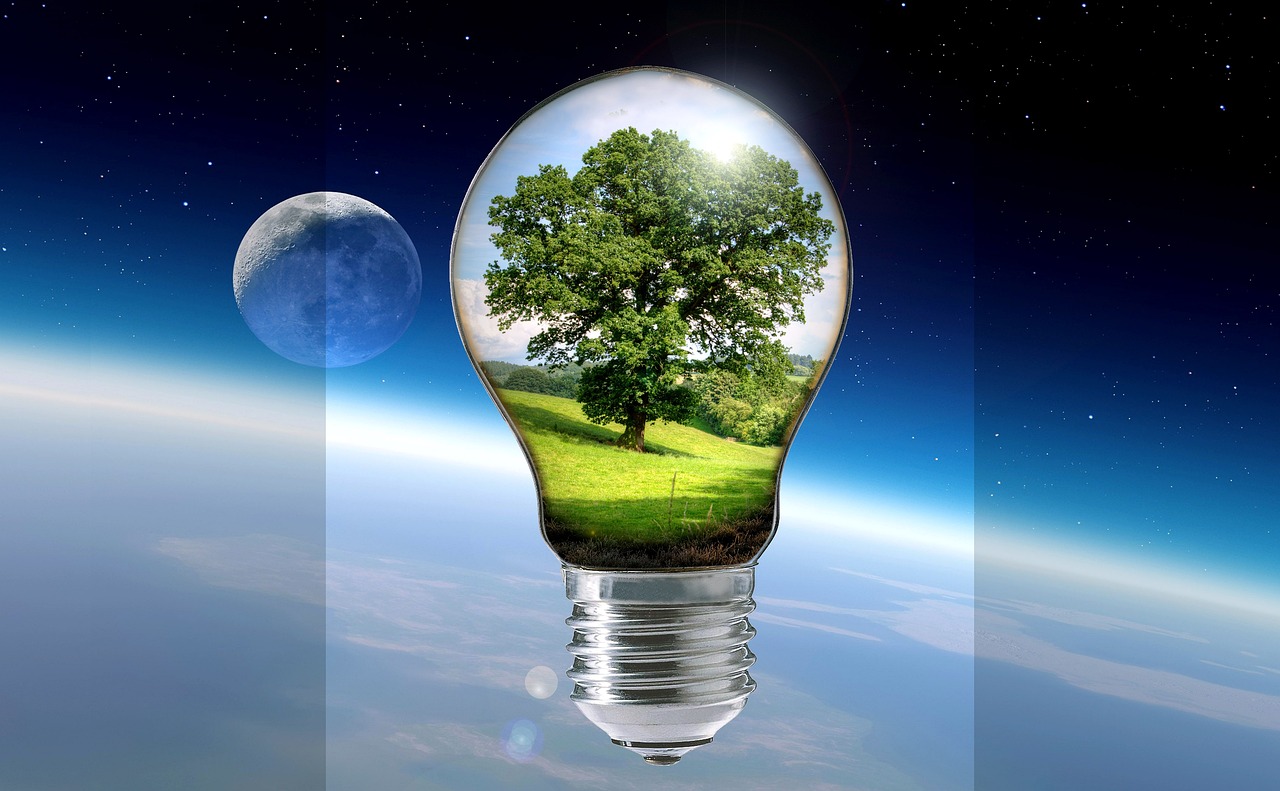
Insulation Technologies
When it comes to energy efficiency in appliances, are the unsung heroes working behind the scenes. Imagine your home as a cozy blanket; the better the insulation, the warmer and more comfortable it feels without cranking up the thermostat. Similarly, appliances with advanced insulation technologies minimize energy loss, ensuring that the energy used is effectively utilized. This not only saves you money on your energy bills but also contributes significantly to reducing your carbon footprint.
One of the most exciting advancements in insulation technology is the development of aerogels. Often referred to as "frozen smoke," aerogels are incredibly lightweight and possess remarkable thermal resistance. They can dramatically reduce heat transfer, making them ideal for insulating appliances like refrigerators and ovens. Imagine opening your fridge and finding that it maintains its coolness even when the door is frequently opened; that’s the power of aerogel insulation at work!
Another innovative solution is vacuum insulation panels (VIPs). These panels consist of a core material encased in a vacuum-sealed layer, which effectively eliminates heat transfer by conduction and convection. VIPs are particularly useful in high-performance appliances, such as commercial refrigeration units, where maintaining specific temperatures is crucial. The efficiency of these panels means that less energy is required to achieve and maintain the desired temperature, ultimately leading to lower operational costs.
As we look to the future, the landscape of insulation materials is set to change dramatically. Emerging technologies are paving the way for even more efficient solutions. For instance, researchers are exploring materials like phase change materials (PCMs), which absorb and release thermal energy during the process of melting and freezing. This means that appliances could be designed to store energy during off-peak hours and release it when demand is high, creating a more balanced energy consumption pattern.
| Insulation Type | Key Features | Applications |
|---|---|---|
| Aerogels | Lightweight, excellent thermal resistance | Refrigerators, ovens |
| Vacuum Insulation Panels | Eliminates heat transfer, compact design | Commercial refrigeration, high-performance appliances |
| Phase Change Materials | Energy storage during phase change | Smart appliances, energy management systems |
In conclusion, the evolution of insulation technologies is not just a matter of enhancing appliance performance; it's about creating a sustainable future. As consumers, understanding these technologies can empower us to make informed choices that align with our values of energy conservation and environmental stewardship. So, the next time you consider upgrading your appliances, think about the insulation technology inside them—it could be the key to a more energy-efficient home!
- What is the most energy-efficient insulation material?
Aerogels and vacuum insulation panels are currently among the most energy-efficient materials available.
- How does insulation affect appliance performance?
Good insulation minimizes energy loss, allowing appliances to operate efficiently and maintain desired temperatures.
- Are there any new insulation technologies on the horizon?
Yes, phase change materials are being researched for their potential to revolutionize energy storage and consumption in appliances.

Future of Insulation Materials
The future of insulation materials is nothing short of exciting, as researchers and innovators are tirelessly working to develop solutions that not only enhance energy efficiency but also address environmental concerns. Imagine a world where your home appliances are so well insulated that they barely consume any energy, all thanks to groundbreaking materials that are just around the corner. This is not science fiction; it’s the reality that we are moving towards.
One of the most promising areas in insulation technology is the development of phase change materials (PCMs). These materials have the unique ability to absorb, store, and release heat, effectively regulating temperature fluctuations. By integrating PCMs into appliances, manufacturers can create devices that maintain optimal operating temperatures without excessive energy consumption. For instance, a refrigerator equipped with PCM can keep your food fresh longer while using less power, making it a win-win for both your wallet and the planet.
Another exciting innovation is the potential use of biodegradable insulation materials. As the world becomes more aware of the impact of plastic waste, researchers are exploring natural fibers and other organic materials that can serve as effective insulators without contributing to environmental degradation. Imagine insulation made from recycled denim or agricultural waste—this not only reduces landfill waste but also provides excellent thermal performance.
Furthermore, aerogels are making waves in the insulation world. Known for their incredible lightness and low thermal conductivity, aerogels can be used in a variety of applications, from building materials to appliance insulation. Their unique structure allows them to trap air, creating an effective barrier against heat loss. As production methods become more cost-effective, we can expect to see these materials used more widely in everyday appliances.
To give you a clearer picture, here’s a quick comparison of some emerging insulation materials:
| Material Type | Advantages | Potential Applications |
|---|---|---|
| Phase Change Materials (PCMs) | Temperature regulation, energy savings | Refrigerators, HVAC systems |
| Biodegradable Insulation | Environmentally friendly, reduces waste | Home insulation, packaging |
| Aerogels | Lightweight, low thermal conductivity | Appliance insulation, building materials |
As we look ahead, the integration of smart technology with these advanced insulation materials is poised to revolutionize how we think about energy efficiency. Imagine smart appliances that not only optimize their energy usage but also adapt their insulation properties based on the surrounding environment. This synergy could lead to a significant reduction in energy consumption across the board.
In summary, the future of insulation materials is bright and filled with possibilities. The combination of innovative materials and smart technology will pave the way for appliances that are not only efficient but also environmentally responsible. As consumers, we should keep an eye on these developments, as they will undoubtedly influence our choices and contribute to a more sustainable future.
- What are phase change materials? These are materials that can absorb and release heat, helping to maintain a stable temperature.
- How do biodegradable insulation materials work? They are made from natural fibers or organic materials that provide insulation without harming the environment.
- What are aerogels? Aerogels are extremely light materials with low thermal conductivity, making them excellent insulators.
- Can smart technology improve energy efficiency? Yes, smart technology can optimize energy usage and adapt to environmental changes, enhancing overall efficiency.

Comparative Analysis of Insulation Types
When it comes to energy efficiency in appliances, the type of insulation used can make a significant difference. Insulation is not just about keeping the heat in during winter; it's about optimizing energy usage all year round. Different insulation materials have unique properties that affect their performance, and understanding these can help consumers make informed choices. Let's dive into some of the most common insulation types and see how they stack up against each other.
First off, we have fiberglass insulation. This is one of the most widely used types due to its effectiveness and cost-efficiency. Fiberglass is made from fine strands of glass and has a high resistance to heat flow, making it a popular choice for many appliances. However, while it performs well, its effectiveness can be compromised if it becomes compressed or wet, which can lead to energy losses.
Next, we have foam insulation, which includes both rigid foam boards and spray foam. Foam insulation is known for its superior thermal resistance and air-sealing properties. It can fill gaps and cracks that other materials might miss, providing a more comprehensive barrier against heat transfer. This makes it an excellent choice for refrigerators and freezers, where maintaining a consistent temperature is crucial. However, foam insulation can be more expensive than fiberglass, which might deter some consumers.
Another contender in the insulation arena is cellulose insulation. Made from recycled paper products, cellulose is an eco-friendly option that boasts excellent thermal properties. It is treated with fire retardants and has a high density, which helps it resist airflow. However, cellulose can settle over time, potentially reducing its effectiveness. In appliances, it’s often used in areas where soundproofing is also a priority, like in washing machines.
Then we have the high-tech option: vacuum insulation panels (VIPs). These panels are incredibly efficient, offering the best thermal performance per inch of thickness among all insulation types. VIPs work by creating a vacuum between two layers of material, significantly reducing heat transfer. They are often used in high-end refrigerators and freezers, where space is at a premium. However, their cost and fragility can be a downside, limiting their widespread use.
Lastly, aerogels are emerging as a game-changer in insulation technology. Known as "frozen smoke," aerogels are lightweight and possess remarkable insulating properties. They can be incredibly thin while still providing exceptional thermal resistance. Although they are still relatively expensive and not widely used in consumer appliances, their potential for energy savings is enormous.
To summarize, here’s a quick comparison of these insulation types:
| Insulation Type | Thermal Resistance | Cost | Environmental Impact |
|---|---|---|---|
| Fiberglass | Moderate | Low | Moderate |
| Foam | High | Medium to High | Moderate |
| Cellulose | Moderate | Low to Medium | Low (recycled) |
| Vacuum Insulation Panels | Very High | High | Moderate |
| Aerogels | Very High | Very High | Low (potentially) |
In conclusion, the choice of insulation material can significantly impact the energy efficiency of appliances. While options like fiberglass and cellulose are more affordable and widely used, advanced materials like VIPs and aerogels offer remarkable performance but at a higher cost. As technology continues to evolve, we can expect even more innovative solutions to emerge, making our appliances not only more efficient but also more environmentally friendly.
- What is the most energy-efficient insulation type? Vacuum insulation panels and aerogels are currently the most efficient, but they are also more expensive.
- Can I replace my appliance insulation myself? It's generally recommended to consult a professional for insulation replacement to ensure safety and effectiveness.
- How does insulation affect my energy bills? Better insulation can significantly reduce energy consumption, leading to lower energy bills over time.
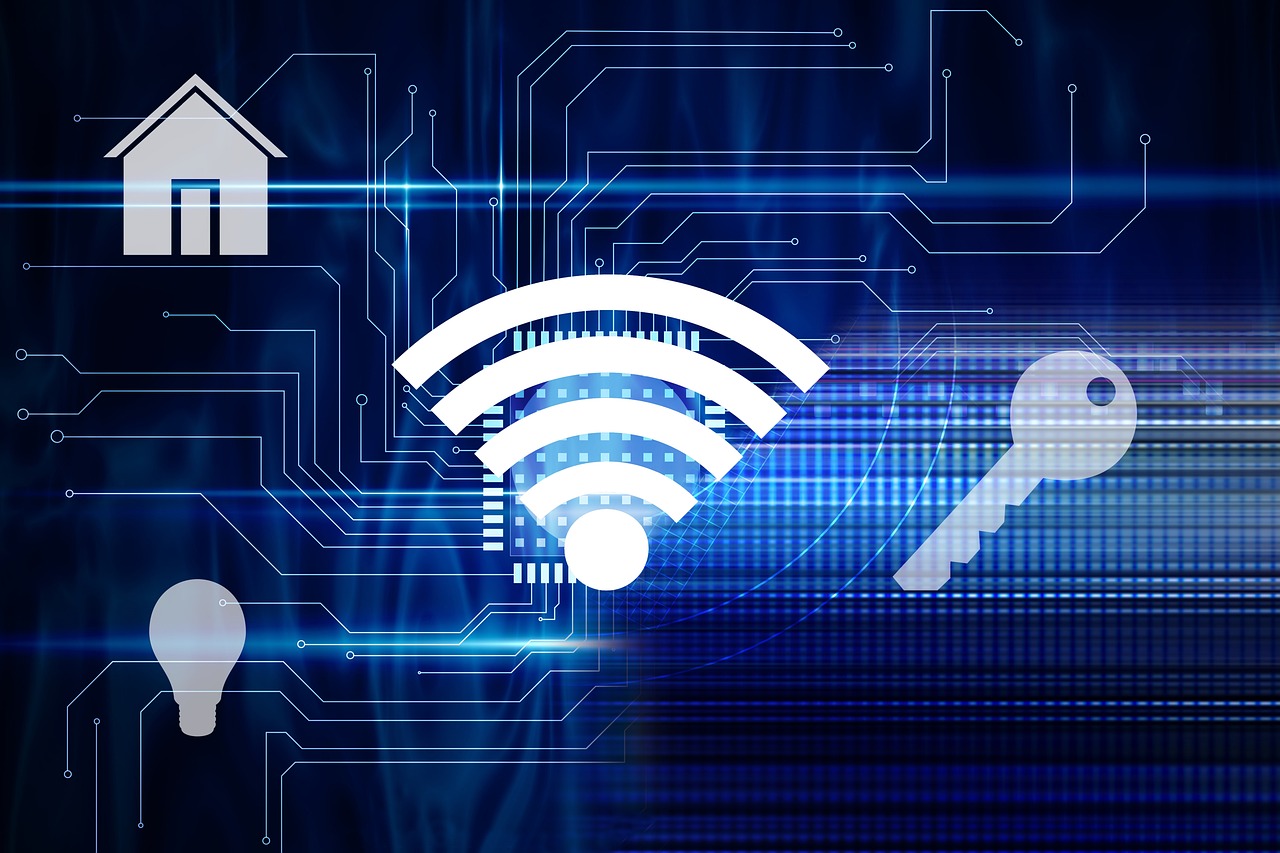
Smart Technology Integration
In today's fast-paced world, is revolutionizing the way we interact with our household appliances. Imagine walking into your kitchen and having your refrigerator automatically adjust its temperature based on the contents inside or your washing machine determining the optimal cycle for your clothes. This isn't just a dream; it's the reality of modern appliances equipped with Internet of Things (IoT) capabilities. These smart devices not only enhance user experience but also significantly contribute to energy efficiency.
At the heart of this transformation is the use of smart sensors that monitor and analyze energy consumption in real-time. For example, smart thermostats can learn your heating and cooling preferences, adjusting themselves to ensure optimal performance while minimizing energy waste. This kind of technology means that appliances are no longer static; they become dynamic, adapting to your lifestyle and usage patterns. By leveraging data analytics, these appliances can communicate with one another, creating a network of efficiency that maximizes energy savings.
Furthermore, many smart appliances come equipped with mobile applications that allow you to control them remotely. Ever left home only to wonder if you turned off the oven? With a smart oven, you can check its status and even turn it off from your smartphone. This level of control not only provides peace of mind but also encourages users to be more conscious of their energy usage. According to recent studies, households that utilize smart technology have reported a reduction in energy consumption by up to 30% compared to those using traditional appliances.
Another exciting aspect of smart technology in appliances is the integration of machine learning algorithms. These algorithms can predict when maintenance is needed, alerting users before a problem becomes significant. This proactive approach not only extends the lifespan of the appliance but also ensures it operates at peak efficiency, reducing the chances of energy waste due to malfunctioning devices.
To illustrate the impact of smart technology on energy efficiency, consider the following table:
| Appliance Type | Traditional Model Energy Consumption (kWh/year) | Smart Model Energy Consumption (kWh/year) | Energy Savings (%) |
|---|---|---|---|
| Refrigerator | 600 | 450 | 25% |
| Washing Machine | 400 | 280 | 30% |
| Thermostat | 1200 | 840 | 30% |
This table illustrates how smart models consistently outperform traditional appliances in terms of energy consumption, highlighting the significant savings that can be achieved. As consumers become more aware of their energy usage, the demand for smart appliances is likely to increase, pushing manufacturers to innovate further.
In conclusion, the integration of smart technology in appliances is not just a trend; it's a necessary evolution in our quest for energy efficiency. By embracing these advancements, we can not only enhance our convenience but also play a crucial role in reducing our environmental footprint. So, the next time you're in the market for a new appliance, consider going smart—it’s a small step for you but a giant leap for energy conservation!
- What are smart appliances? Smart appliances are devices that connect to the internet, allowing for remote control and monitoring, often enhancing energy efficiency.
- How do smart appliances save energy? They use sensors and data analytics to optimize performance, adjust settings based on usage, and provide insights into energy consumption.
- Are smart appliances worth the investment? Yes, while they may have a higher upfront cost, the long-term energy savings and convenience often outweigh the initial expense.
- Can I control smart appliances remotely? Absolutely! Most smart appliances come with mobile apps that allow you to control them from anywhere.

Energy Star Ratings Explained
The Energy Star program is a government-backed initiative that helps consumers identify energy-efficient products. But what exactly does it mean when you see that little blue label on your appliance? In simple terms, an Energy Star rating indicates that a product meets strict energy efficiency guidelines set by the U.S. Environmental Protection Agency (EPA). This means that these appliances not only save energy but also help reduce greenhouse gas emissions, making them a win-win for both your wallet and the environment.
Energy Star ratings are determined through a rigorous testing process that evaluates how much energy an appliance uses compared to similar models. For instance, a refrigerator with an Energy Star label typically consumes 10-50% less energy than standard models. This significant reduction in energy usage can lead to substantial savings on your electricity bills over time. Imagine being able to run your fridge without the constant worry of skyrocketing energy costs!
So, how does the Energy Star program ensure that these ratings are reliable? The process involves:
- Testing: Appliances undergo testing in certified laboratories to measure their energy consumption.
- Certification: Only those that meet the efficiency criteria receive the Energy Star label.
- Monitoring: The EPA regularly reviews products and their performance to ensure they continue to meet Energy Star standards.
It's important to note that the Energy Star label isn't just for large appliances like refrigerators and washing machines. It also applies to a variety of products, including:
- Lighting (like LED bulbs)
- Heating and cooling systems
- Electronics (such as televisions and computers)
With so many options available, consumers can easily find Energy Star-rated products that fit their needs. This not only promotes energy conservation but also encourages manufacturers to innovate and create more efficient appliances. As a result, the Energy Star program plays a crucial role in driving the market towards sustainability.
In addition to saving money and energy, choosing Energy Star-rated appliances can also enhance your home’s overall comfort. For example, energy-efficient heating and cooling systems provide better temperature control, leading to a more enjoyable living environment. It’s like having a cozy blanket wrapped around your home while knowing you're doing your part for the planet!
Understanding Energy Star ratings can significantly influence consumer choices. Many people are becoming more conscious of their environmental footprint and are actively seeking out products that align with their values. As awareness grows, so does the demand for energy-efficient appliances, driving manufacturers to prioritize sustainability in their designs.
In conclusion, the Energy Star program is more than just a label; it’s a commitment to energy efficiency and environmental responsibility. By opting for Energy Star-rated appliances, you're not only making a smart financial decision but also contributing to a greener future. So, the next time you're shopping for a new appliance, keep an eye out for that blue sticker—it’s a small change that can lead to a big impact!
Q: What does it mean if an appliance is Energy Star certified?
A: It means the appliance meets energy efficiency guidelines set by the EPA, using less energy than standard models.
Q: Are Energy Star appliances more expensive?
A: While they may have a higher upfront cost, Energy Star appliances often lead to long-term savings on energy bills.
Q: Can I find Energy Star ratings for small appliances?
A: Yes! Energy Star ratings apply to a wide range of products, including small appliances like microwaves and coffee makers.
Q: How can I be sure the Energy Star label is legitimate?
A: Look for the Energy Star logo on the product packaging or specifications. You can also check the EPA's official website for a list of certified products.
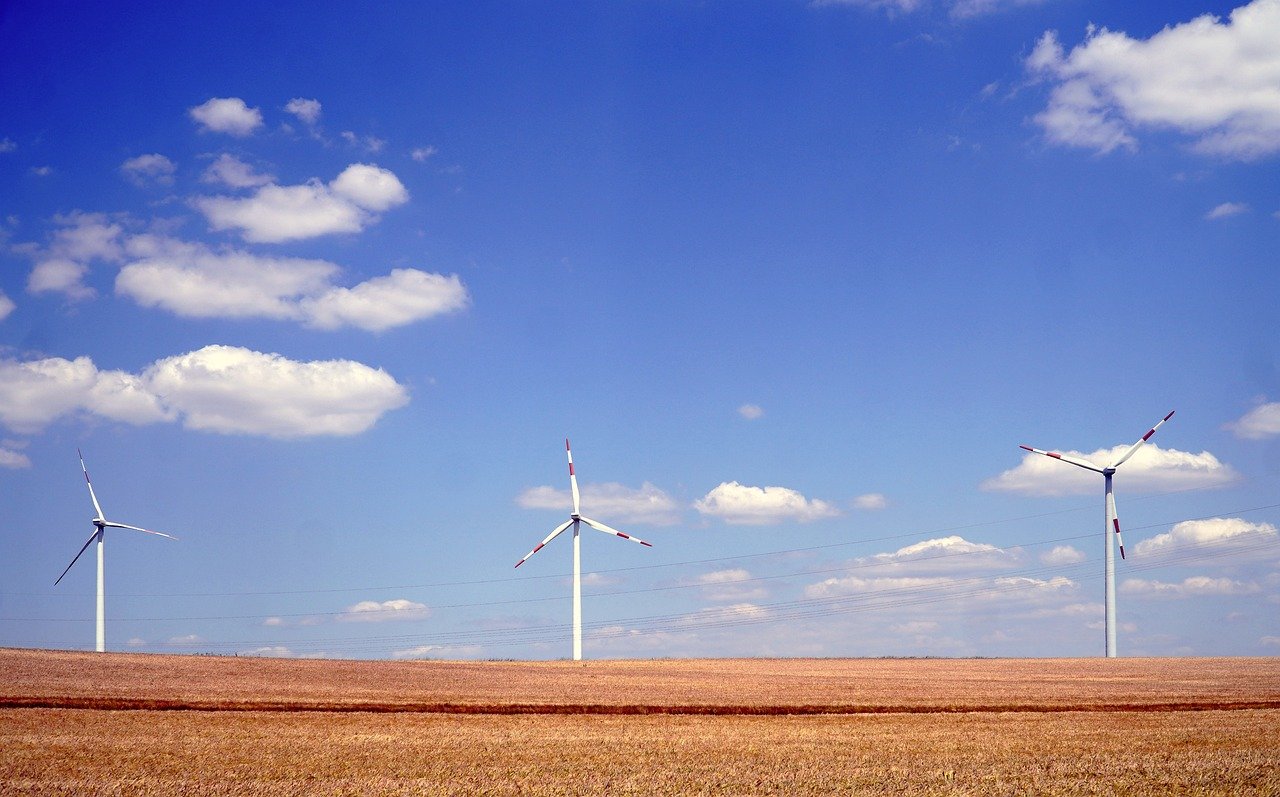
Impact on Consumer Choices
In today's world, where every penny counts and the planet's health is at stake, the impact of Energy Star ratings on consumer choices is monumental. Have you ever wondered why some appliances seem to fly off the shelves while others gather dust? The answer often lies in their energy efficiency ratings. Consumers are becoming increasingly aware of the financial benefits and environmental implications of their purchases. When faced with a choice between two similar products, many are now inclined to opt for the one that boasts a higher Energy Star rating. This shift in mindset is not just a passing trend; it's a reflection of a broader commitment to sustainability.
Moreover, the information era has empowered consumers with knowledge. With a few clicks, anyone can access detailed comparisons and reviews that highlight energy efficiency. This accessibility has made it easier for shoppers to make informed decisions, often prioritizing energy-efficient options over cheaper, less efficient alternatives. For instance, consider the difference between a standard refrigerator and one with an Energy Star label. While the initial purchase price may be higher for the energy-efficient model, the long-term savings on energy bills can be substantial. This realization is reshaping purchasing habits, as consumers begin to see appliances not just as expenses, but as investments.
Additionally, the influence of social media and online communities cannot be overlooked. Consumers frequently share their experiences and recommendations, creating a ripple effect that can significantly impact market trends. When a popular influencer showcases an energy-efficient appliance, their followers are likely to take notice and consider similar products in their own buying decisions. This word-of-mouth marketing, amplified by social platforms, has the power to sway consumer preferences towards energy-efficient appliances.
To further illustrate this impact, let’s take a look at a simple table comparing consumer preferences before and after the rise of Energy Star ratings:
| Year | Percentage of Consumers Prioritizing Energy Efficiency |
|---|---|
| 2010 | 30% |
| 2015 | 50% |
| 2020 | 70% |
This table clearly shows a growing trend in consumer preference for energy-efficient appliances over the years. The jump from 30% in 2010 to a staggering 70% in 2020 signifies a cultural shift towards sustainability and energy conservation.
In conclusion, the impact of Energy Star ratings on consumer choices is profound and multifaceted. As awareness grows, consumers are not just looking for the best deals; they are also considering the long-term benefits of energy efficiency. This change in perspective is not only beneficial for individual households but also contributes to a more sustainable future for the planet. It's a win-win situation, where consumers save money, and the environment benefits from reduced energy consumption.
- What does an Energy Star rating mean? - An Energy Star rating indicates that an appliance meets strict energy efficiency guidelines set by the U.S. Environmental Protection Agency.
- How can I find Energy Star rated appliances? - You can find Energy Star rated appliances by looking for the Energy Star label on the product or by searching for certified products on the Energy Star website.
- Do Energy Star appliances really save money? - Yes, Energy Star appliances are designed to be more efficient, which can lead to significant savings on energy bills over time.

Regulation and Standards
When it comes to energy efficiency in appliances, are the backbone that ensures manufacturers adhere to specific guidelines aimed at reducing energy consumption and environmental impact. Governments around the world have recognized the importance of energy-efficient appliances, leading to the establishment of various regulations that promote sustainable practices. These regulations not only help in conserving energy but also play a significant role in guiding consumers toward making informed choices.
One of the most prominent regulations is the Energy Star Program, which was launched by the U.S. Environmental Protection Agency (EPA) in 1992. This program sets strict energy efficiency guidelines that appliances must meet to earn the Energy Star label. Products that receive this certification are independently verified to perform at least 20-30% more efficiently than standard models, making them an attractive option for environmentally conscious consumers. In fact, the Energy Star label has become synonymous with energy efficiency, influencing purchasing decisions across various markets.
In addition to the Energy Star Program, many countries have implemented their own set of regulations and standards. For instance, the European Union has established the EU Energy Label, which categorizes appliances based on their energy consumption and efficiency. Appliances are rated from A+++ (most efficient) to D (least efficient), providing consumers with a clear visual representation of energy performance. This labeling system not only aids consumers in making informed decisions but also encourages manufacturers to innovate and improve their products to achieve higher ratings.
Moreover, the implementation of regulations often leads to a ripple effect in the market. As manufacturers strive to meet these standards, they invest in research and development to create more energy-efficient technologies. This competition fosters innovation, resulting in a wide array of products that not only save energy but also enhance user experience. For instance, advancements in smart technology integration have emerged from the need to comply with energy efficiency regulations, leading to the creation of appliances that can optimize energy usage based on real-time data.
However, it is essential to recognize that regulations and standards are not static; they evolve based on technological advancements and changing environmental priorities. As new materials and technologies emerge, regulatory bodies continually reassess and update their guidelines to reflect these changes. This adaptability ensures that energy efficiency remains a top priority in appliance manufacturing, ultimately benefiting both consumers and the environment.
In conclusion, regulation and standards are crucial in shaping the energy efficiency landscape of appliances. They not only guide manufacturers in developing innovative products but also empower consumers to make choices that align with their values. As we look toward the future, it is clear that maintaining and enhancing these regulations will be vital in our collective effort to reduce energy consumption and mitigate environmental impact.
- What is the Energy Star Program? The Energy Star Program is a certification system that identifies energy-efficient appliances, helping consumers save energy and money.
- How do regulations impact appliance manufacturers? Regulations compel manufacturers to innovate and improve their products to meet energy efficiency standards, fostering a competitive market.
- Are energy-efficient appliances more expensive? While the initial cost may be higher, energy-efficient appliances often lead to significant savings on energy bills over time.
- How can I identify energy-efficient appliances? Look for labels such as Energy Star or EU Energy Label, which indicate compliance with energy efficiency standards.
Frequently Asked Questions
- What is energy efficiency in appliances?
Energy efficiency in appliances refers to the ability of devices to use less energy while still delivering the same performance. This means that energy-efficient appliances consume less electricity, which not only helps lower utility bills but also reduces environmental impact.
- How do thermodynamics influence appliance efficiency?
Thermodynamics is the study of energy transfer and transformation. The laws of thermodynamics dictate how energy is converted and used in appliances. Understanding these principles helps manufacturers design appliances that minimize energy waste and maximize performance, ensuring that more energy is effectively used for the intended function.
- What are some innovations in materials science that enhance energy efficiency?
Recent advancements in materials science have led to the development of new materials that improve insulation and reduce energy loss. For example, materials like aerogels and vacuum insulation panels are designed to minimize heat transfer, thereby enhancing the overall energy efficiency of appliances.
- What are insulation technologies, and why are they important?
Insulation technologies are methods and materials used to reduce heat transfer in appliances. Effective insulation is crucial because it helps retain heat in heating appliances and keeps cooling appliances cold, leading to lower energy consumption. The better the insulation, the less energy is wasted.
- What is the future of insulation materials?
The future of insulation materials looks promising with the development of innovative solutions that could revolutionize energy conservation in appliances. Emerging materials are being designed to provide even better thermal performance, which could lead to significant improvements in energy efficiency standards.
- How do smart technologies contribute to energy efficiency?
Smart technologies, such as IoT and smart sensors, allow appliances to optimize their energy usage based on real-time data. This means that appliances can adjust their operation to minimize energy consumption, providing users with greater control and efficiency in their energy use.
- What are Energy Star ratings, and why are they important?
Energy Star ratings are a certification program that identifies energy-efficient appliances. These ratings help consumers understand the energy performance of products, making it easier to choose appliances that will save money on energy bills and contribute to environmental sustainability.
- How do Energy Star ratings impact consumer choices?
Understanding Energy Star ratings influences consumer purchasing decisions by highlighting the benefits of energy-efficient products. Consumers are increasingly aware of energy efficiency, which shapes market trends and encourages manufacturers to produce more eco-friendly appliances.
- What role do regulations and standards play in energy efficiency?
Government regulations and standards are essential for promoting energy efficiency. These policies encourage manufacturers to develop appliances that meet specific energy performance criteria, ultimately leading to a more sustainable market and helping consumers make informed choices.












